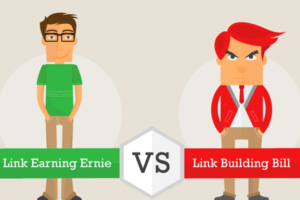Content Attributes
The internet is terrific. You would find everything scattered across the internet, right from a simple food recipe to a complex assemblage of a device. Initially, it was a medium of entertainment but gradually, it has become an inextricable part of our lives. Today, the internet is a medium for global business and no one is untouched by this fact.
There are multiple e-commerce websites present on the internet. Amazon, Flipkart, Myntra, Walmart, Ajio, etc., are some of the greatest examples we know. They’re doing great business, but what’s the reason behind their success? There’s nothing else but some beautifully executed e-commerce SEO strategies. When you have the right set of SEO strategies, no clickbait technique can deviate from success.
To succeed in gaining SEO rankings, a website just needs the essential sea change. This sea change includes some basic makeovers of the website like some inclusions & exclusions. Once these are incorporated into the website design, the SEO rankings of the website will upscale along with sales. So, before you get ready to spend a hefty sum of money, just go through this guide that will help to make your e-commerce SEO friendly in 10 minutes.
But, you need to ask yourself are you making 3 SEO mistakes? What are those mistakes, let’s understand.
Following Outdated Practices
If you depend on outdated SEO practices, it is obvious that you won’t get the desired RoI. Google and other search engines keep updating themselves and hence, following the same pace is essential.
The website Is Not Updated
Updating the website is essential. If the website is not updated periodically, its rankings will automatically depreciate. Moreover, if it has a complex UI, the website will have an increased bounce rate.
You Follow Trends Blindly
It is not essential that a plug-in suitable for Flipkart will also ooze positive results. However, that isn’t essential that guesswork would work for your e-commerce web design. Hence, you must start using Google Analytics to keep a track record of what’s right & what’s not for the e-commerce website design.
Tip for an SEO-Friendly E-Commerce Website
In order to make the SEO for e-commerce website strong, you need to have the right data and strategies to keep everything smooth. And, the most important step is patience and zeal. If you lack these two ingredients, brewing the website growth wouldn’t be fun. So, let’s proceed with the untold secrets that will redefine your SEO website.
The Crown of Keywords
When any website, whether business or e-commerce, gets embellished when it dons the beautiful crown of the right keywords. It is a must for incorporating the right keywords because all search engines, and Google, follow the same algorithm based on keywords for defining the website ranking. If you want to find the trending keywords for positive outcomes, use keyword finder tools like LongTail Pro, SEMRUSH, SerpStat, etc.
Many professionals state that utilizing long-tail keywords for e-commerce websites is like a heavenly boon. They convert better varieties as they drive more target audiences. For more details, just peek into your competitor’s metrics and implement the same for driving better results.
AMP- The Sales Booster
As per a recent survey conducted in the second quarter of 2019, by a noted magazine in the United States, most e-commerce websites worldwide lose their sales by 1% due to delays in the loading of web pages. The delay is caused due to the clunky e-commerce web design. This problem can be kept at by AMP or accelerated mobile pages.
More than 83% of the global populace uses mobile phones for online shopping. Hence, keeping the AMP copy of the webpage becomes essential. This will prevent third-party JavaScript intervention and opt-in forms that are usually found on web pages that do not include AMP. By incorporating AMP, a website gets the benefits like decreased bounce rate as the load-speed increases, which in return brings better RoI.
Content is The King
There are no second thoughts about this. With appropriate content present on the website, in the form of blogs, FAQs, infographics, and articles, the visitor of the website would not need to seek an additional platform for supplement details. Every e-commerce web design company all over the world focuses on creating valuable content for user engagement.
Besides, publishing long-form content also helps in attracting organic traffic to the e-commerce website by determining the target keywords used. In a nutshell, it is all about understanding the algorithm game of Google. But, that doesn’t mean stuffing keywords. Craft detailed and crisp content with long-tail keywords for better results.
However, drafting new content for the same product is not an easy job. It is monotonous and with the lack of zeal to write, coming up with new ideas is like trying hard to brainstorm fresh ideas. Here’s the hack for it. To keep the e-commerce web design updated, re-framing the same content is a key hack practiced on a wide scale. Hence, the existing content can be re framed, by including new keywords, for keeping the webpage active.
Image Optimization
Image optimization is a key pillar of every e-commerce website online. You just cannot imagine an e-commerce website design with no imagery. No one would be able to distinguish between two products. Visuals drive the highest content online, whether it is via a black-hat practice or organic search results. Moreover, if your web content isn’t indulging, the imagery will keep the visitor engaged.
It is one of the most terrific on-page SEO strategies that will bear the best fruit to uplift the e-commerce website design. You can optimize the imagery by using the JPEG format. If you’ve additional graphics on every web page like GIFs and short videos, consider reducing them if you cannot remove them. This will reduce the slow loading of the website.
Visual Architecture of The E-Commerce Website
It is true that visual representation matters. Many e-commerce web designers keep up with the leading trends and that’s totally fine. But designing e-commerce is a different thing. It should be visually appealing but shouldn’t have a complex frame. When a website becomes complex to operate, especially an e-commerce website, its sales tend to depreciate by a sizable percentage.
At its core, the website should be easy to operate and the user should not put additional effort to find the desired product. Every other portal would tell you what to do for building the right website structure. But no one would explain what shouldn’t be done. Here’s a quick look at things that shouldn’t be done.
- Exclusion of backlinks within the website
- Exclusion of smooth navigation
- Exclusion of head keywords and meta tags
Signing Off
Implementing the right SEO stratagem seems like dodging a bullet when you’re not able to understand them. Once you grab the SEO concept, it becomes a cakewalk to optimize the e-commerce website. The prime aim behind sharing these hacks was to tell all e-commerce store owners to they can modify and rebuild the website without disturbing the prime framework. If you’ve already implemented these hacks, you might be witnessing the upscale in sales and rankings. If you’re yet to implement them, go on and do it now!



